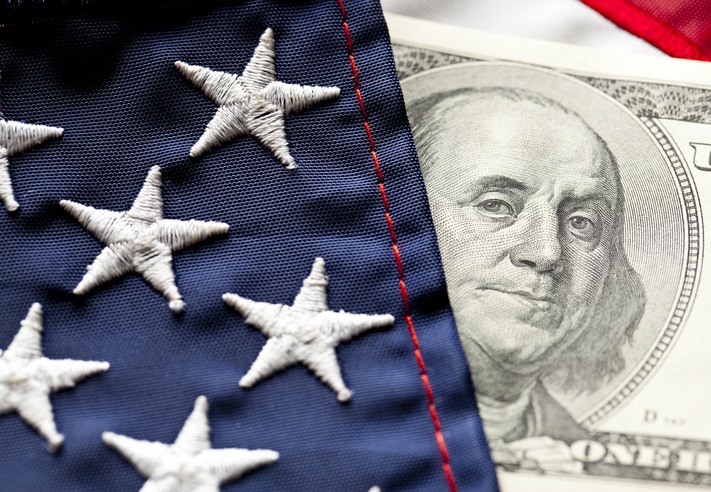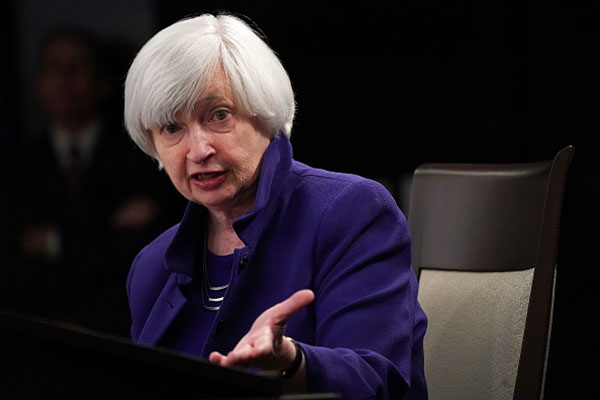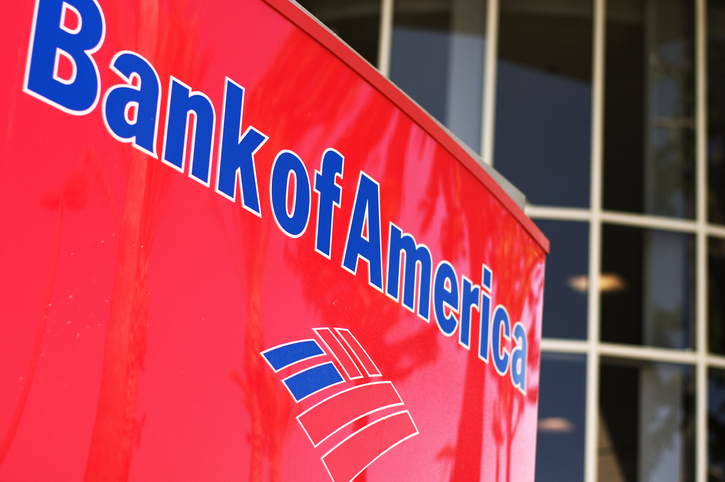Stockwatch: why US banks look like good recovery picks
Commercial banks seem attractive, but much rests on any US interest rate hikes.
22nd January 2021 11:33
by Edmond Jackson from interactive investor
Commercial banks seem attractive, but much rests on any US interest rate hikes.

Fourth-quarter 2020 results from US banks in the last week have underlined a radical divergence between the underlying economy and financial markets. Commercial banks are typically seeing lending activity/revenues falling, while investment banks enjoy bumper revenues from securities trading and raising capital.
Despite overall good progress, bank stock prices have eased in unison a few per cent this week. It shows the sector is substantially a macroeconomic call. Stocks that rallied since last November on hopes for vaccines are now hitting a ceiling – at least more sensibly valued than growth-stock froth.
Commercial banks are typically on price-to-earnings (PE) ratios in the mid-teens, amid hopes for a recovery in lending. Investment banks are rated lower – despite stronger performance – amid wariness that markets can repeat anything like the 2020 boom.
This, I believe, is the crux issue to decide for US bank stocks, indeed more widely: can the US avoid a pre-emptive interest rate rise to contain inflation?
Markets assume Janet Yellen (pictured), the new Secretary to the US Treasury, will sustain a bias to dovish support packages, like she did on monetary policy when chairing the Federal Reserve from 2014 to 2018.

- What will Joe Biden mean for US stocks?
- Your 50 most-popular US stocks
ii view: JP Morgan justifies star status with record profits
A $1.9 trillion (£1.5 trillion) in extra fiscal stimulus was proposed by Joe Biden a week ago, on top of $900 billion agreed before Christmas and representing the fifth such US government package. This will extend greater financial support to those in need and introduce a $15 hourly minimum wage. This is meant to support the ‘demand side’ of the economy, and, in due course, credit growth.
If agreed by Congress, it would take recent accumulated fiscal stimulus to an incredible 25% of US GDP. Several investment banks reckon on an extra $1 trillion, to base 2021 gross domestic product (GDP) forecasts in a 5.5% to 6.5% range. Since bank stocks are typically a forward play on an economy, this summarises the bull case.
Where this will leave US debt and inflation is largely brushed aside. Modern monetary theory – now in vogue – says there can be no repeat of the problems that, for instance, Britain found itself in after 1960s Labour governments ramped up healthcare and other spending. Older sages tend to disagree, saying the US is in uncharted waters and the previous extent of fiscal expansion has led to trouble.
The inflation upshot is critical. The Fed is committed to start raising interest rates if inflation edges over 2% for a yearbut unless it has cast aside pre-emptive measures, its board should be aware how various commodity prices have soared 40% and more since last April lows. Oil has been held back by accumulated inventory.
A related issue is whether a burst of economic growth leads to skills shortages that push up labour costs in a rising economy even if employment remains below pre-pandemic levels.
If invested in US stocks, you therefore need to consider if the Fed will run with the new Democrat administration’s goals for growth and employment or maintain the proper central bankers’ role – to intercept inflation, even if it means ‘taking away the punch bowl’.
Conservative financial economists would argue that the longer the Fed leaves it, the worse the dregs will taste.
Commercial/universal backs: lately boosted by reserve releases
Five of the six largest US banks have got bigger and seemingly stronger. Yet they appear to have recently benefited from stimulus measures curbing bad debts and propping up household spending. Hence, the banks have been able to release reserve money set aside to cope, boosting profit beyond estimates. Banks now expect loan growth to resume this year, but not until the second half.
Last Friday, JPMorgan Chase (NYSE:JPM) kicked off the sector’s reporting – its stock hitting an all-time high of $143 after citing record revenues both for trading and advisory. It is a ‘universal bank’, meaning it blends traditional lending with capital market activities. It would say this is the reason it enjoys an historic PE of around 15x, ahead of other investment banks and perceived as less volatile in terms of underlying business. Fixed-income trading revenues rose 15% and equity trading by 32% but the stock has eased below $135.
It is a good example of a ‘hold’ stance on a US bank stock – if you believe Ms Yellen – the Sugar Plum Fairy of liberal economics – can avoid the party turning sour.
Citigroup (NYSE:C) and Wells Fargo (NYSE:WFC), however, both missed expectations for revenue, despite Citi enjoying a big earnings boost in spite of its credit losses doubling to near 4% of total loans. Citi shares appear stuck roughly in a $40 to $60 range in the last three years, while Wells has yet to show it can definitively break a downward trend over a similar timeframe. I would tend to avoid both.
Bank of America (NYSE:BAC) similarly beat profit estimates but saw a 10% like-for-like revenue decline, its credit loss provisions falling sharply over the final quarter of 2020 – in contrast to Citi.
This universal bank’s performance was bolstered, however, by a 30% rise in equities trading revenue to $1.3 billion. The bank’s stock eased nearly 1% to $32.77 in response.

Near the top end of a three-year sideways range, and on a PE of 17x, it is regarded as the bank most leveraged to a US economic recovery. So if circa 6% GDP growth becomes reality this year then Bank of America could well be sought as a ‘buy’.
I tend to think a 17x PE is a fair rating but concede it could go higher in a market that has abandoned ‘price discovery’ amid overpowering stimulus.
You are also taking a view on Covid-19: how well, vaccines can be deployed against its very substantial spread in the US, hence creating potential for it to mutate and hinder immunity.
This earnings period has at least shown banks able to avoid worse-case scenarios during Covid, albeit with exceptional gains from securities trading often sweetening numbers. Doesn’t the five biggest US banks all beating equities trading revenue estimates by double-digit percentages rather signal a market top?
Goldman Sachs languishes on sub-12x PE
Contesting my view, US equities have substantially benefited from liberal Fed policy in the last decade. Goldman Sachs (NYSE:GS) has been a chief beneficiary of a pro-risk assets environment.
The purest investment banking play in a sector typically ‘commercial to universal’ by activity, Goldman Sachs has yet to treble in value since 2010 as quantitative easing kicked in. Last week, it hit a $308 all-time high, but has also dropped in sympathy with the sector despite Tuesday’s numbers being much stronger than expected.
The dilemma for stock-picking versus guessing macroeconomic developments and crowd behaviour is shown by how Goldman now being 6% off its peak. It has had the largest of the banks’ post-results drop. That is despite declaring a 40% jump in equity trading revenue to $2.4 billion, half a billion dollars ahead of expectations.
Investment banking revenues – advising on capital raises – soared 27% to $2.6 billion, versus $2.2 billion expected. Overall earnings per share (EPS) were $12.1 versus consensus for $7.5.
- Ian Cowie: how I invest in the US in my ‘forever fund’
- Are you saving enough for retirement? Our calculator can help you find out
Again, in terms of defining a market top, it is horrifying how Goldman’s boss cited half the revenue from capital-raising as linked to special purpose acquisition vehicles. These are highly reminiscent of shell companies that floated with intent to acquire internet businesses ahead of the 2000 bubble bursting.
This was ‘best-in-class’ performance and helps draw a line under Goldman paying record anti-bribery fines last October, linked to the 1MDB scandal. However, management cautions that 2021 might not bring the same trading opportunities as last year, and a new consumer business might take an extra year to break even.
Goldman’s greater stock volatility relative to the sector reflects inherently more volatile investment bank revenues. The bank tends to enjoy an aura for superior insight and skills, although I suspect 2021 could see a break in the US stock market if wider inflation rises.
Goldman could later be a good play if a post-pandemic ‘Roaring Twenties’ type era evolves, but for now I would avoid its stock.
Bank of America is the overall winner for risk/reward
I am anticipating the likely winner of a Keynesian beauty contest – which stock will garner most favours – as much as underlying performance. But Bank of America looks the one most likely to be held by international investors who want exposure to Biden/Yellen expanding the US economy.
For such portfolios, the fear of a setback in US stocks – if the Fed is forced into rate raising – may be mitigated by a stronger dollar.
Edmond Jackson is a freelance contributor and not a direct employee of interactive investor.
These articles are provided for information purposes only. Occasionally, an opinion about whether to buy or sell a specific investment may be provided by third parties. The content is not intended to be a personal recommendation to buy or sell any financial instrument or product, or to adopt any investment strategy as it is not provided based on an assessment of your investing knowledge and experience, your financial situation or your investment objectives. The value of your investments, and the income derived from them, may go down as well as up. You may not get back all the money that you invest. The investments referred to in this article may not be suitable for all investors, and if in doubt, an investor should seek advice from a qualified investment adviser.
Full performance can be found on the company or index summary page on the interactive investor website. Simply click on the company's or index name highlighted in the article.
Disclosure
We use a combination of fundamental and technical analysis in forming our view as to the valuation and prospects of an investment. Where relevant we have set out those particular matters we think are important in the above article, but further detail can be found here.
Please note that our article on this investment should not be considered to be a regular publication.
Details of all recommendations issued by ii during the previous 12-month period can be found here.
ii adheres to a strict code of conduct. Contributors may hold shares or have other interests in companies included in these portfolios, which could create a conflict of interests. Contributors intending to write about any financial instruments in which they have an interest are required to disclose such interest to ii and in the article itself. ii will at all times consider whether such interest impairs the objectivity of the recommendation.
In addition, individuals involved in the production of investment articles are subject to a personal account dealing restriction, which prevents them from placing a transaction in the specified instrument(s) for a period before and for five working days after such publication. This is to avoid personal interests conflicting with the interests of the recipients of those investment articles.